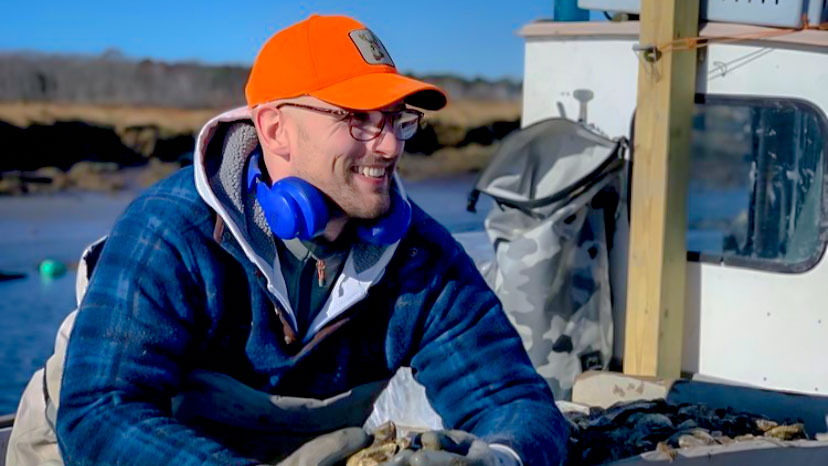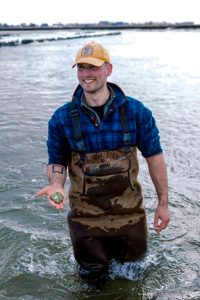
Using eDNA to Create Tools for Blue Mussel Detection with Adam Copeland
By Ilaria Bardini Writing Intern,
Along the rocky intertidal zones of New England, blue mussels (Mytilus edulis), a native species of filter feeding bivalves, cling onto rocks, piers, and other structures. Although seemingly mundane and relatively sedentary in nature, these molluscs are essential to biodiversity, commercial aquaculture, and serve as habitats for a myriad of marine organisms.

Adam Copeland is a graduate student working on the NSF EPSCoR Track-1 Maine-eDNA grant. He is currently creating tools using eDNA for the detection of blue mussels in the Gulf of Maine. Based in Portland, Maine, he is advised by Erin Grey, assistant professor of aquatic genetics in the school of biology and ecology and Nichole Price, a benthic marine ecologist and senior research scientist at Bigelow Laboratory.
Copeland’s work aligns with a Maine-eDNA research goal focused on larval species of fish and other marine organisms.“I’m fascinated in larval ecology, population dynamics, and spatial dynamics. For a lot of species in the ocean, that’s their main method of covering ground. Especially if you think of something that doesn’t move a whole lot, like a mussel. As an adult, it’s not moving very much but it gets distributed as the larva. I’m really interested in the spatial ecology aspect of that.” Questions concerning the detection of blue mussels in the Gulf of Maine, such as the ones Copeland is exploring, are integral both ecologically and economically.
By collecting databases of genetic sequences to work with, Copeland further analyzes data and information to design tests for the accurate detection of blue mussels. This has proven to be difficult due to the genetic nature of Mytilus edulis.“It’s been a very manual process. There’s a lot of variation in mussel DNA so for a lot of what I’ve been doing, the computer programs can’t handle.” Going further into the complicated nature of blue mussels, Copeland added “Typically within a species, there won’t be as much variation. Dogs will have much similar DNA to each other than between dogs and cats. That’s not true for mussels. There’s just as much difference between mussels as there is between mussels and clams.”
“Mussels are just a piece of the puzzle.” He emphasizes, “I want people to understand that even when it seems like we’re getting into the weeds, there’s a reason that we’re doing it and everything is interconnected. This one aspect of blue mussels that I’m researching can ripple out into the ecosystem and have larger impacts.” Copeland hopes to continue developing detection tools while exploring personal interest in scientific ethics and communications. “My interest in scientific ethics arises from my environmental DNA work. The field has inherited many of the ethical issues in genomics writ large and brings along plenty of new challenges of its own. Researchers within Maine-eDNA and in the broader eDNA community are really ramping up grappling with these challenges, so it’s very exciting to contribute to that.”
